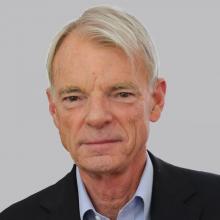You are here
The shape of global recovery
Mar 17,2021 - Last updated at Mar 17,2021
MILAN — COVID-19 vaccination programmes are gaining momentum as production capacity ramps up, and as disorganised and tentative distribution and administration procedures are replaced by more robust systems. A task of this size will surely encounter additional bumps along the road. But it is now reasonable to expect that vaccines will have been made available to most people in North America by this summer, and to most Europeans by early fall.
As of March 15, Israel has administered more than 100 doses per 100 people, compared to 38 in the United Kingdom, 36 in Chile, 32 in the United States, and 11 in the European Union — and those numbers are rising fast. The rates are relatively lower in Asia and the Pacific, but these countries already largely contained the virus without mass vaccination programmes, and their economies have since experienced a rapid recovery. Meanwhile, lower-income countries on several continents are falling behind, pointing to the need for a more ambitious international effort to provide them with vaccines. As many have noted recently, in our interconnected world, no one is safe until everyone is safe.
Assuming that vaccination continues to pick up globally, the most likely scenario for the economy is a rapid recovery in the second half of this year and into 2022. We should see a partial but sharp reversal of the K-shaped growth patterns that have emerged in pandemic-hit economies.
Specifically, growth in highflying digital and digitally enabled sectors will subside, but not dramatically, because the forced adoption of their services will be tempered by the resumption of in-person activities. At the same time, the sectors that were partly or completely shut down will revive. Major service sectors like retail, hospitality, entertainment, sports and travel will reopen for an eager public. Industries such as cruise lines will probably institute their own version of a vaccination certificate, with sales rebounding once customers are confident about safety.
All told, this return to previously closed consumption patterns, turbocharged by pent-up demand, will produce a burst of growth in depressed sectors, leading to improved economic performance overall. Unemployment will almost certainly fall, even if permanent changes in living and work patterns reduce employment in some areas. (For example, hybrid work models that lock in pandemic-era remote workplaces may reduce demand for restaurants in city centres.)
To be sure, while massive government programmes have buffered the economic shock of the pandemic, hard-hit sectors have nonetheless faced significant losses. Between these transitory reductions on the supply side and the predictable surge in demand, a temporary bout of inflation is possible and perhaps likely. But that is no cause for great concern.
Financial markets are already anticipating these trends. After struggling before the pandemic and being hammered in the early stages of the contraction, many value stocks are staging a comeback. Growth stocks in the digital sector, meanwhile, have experienced a small correction. But this, too, should be temporary. While value stocks will continue to hover above their previous doldrums, digital growth stocks will benefit from the powerful long-term trend toward incremental value creation via intangible assets.
One matter of considerable importance is international travel. Businesses can function on digital platforms for a while, but eventually in-person contact will become essential. Moreover, many economies are heavily dependent on travel and especially tourism, which accounts for 10-11 per cent of GDP in Spain and Italy and as much as 18 per cent of GDP in Greece (and probably more if one counts multipliers).
Compared to many other sectors, travel faces additional headwinds, because it is non-local. The rapid recovery pattern that local service industries can expect once the virus is under control does not strictly apply to travel, especially at the international level. To allow for more travel between countries, both — origin and destination — will need to have made progress in vaccinating their populations and containing the virus. Those who are vaccinated and willing to travel will have to be acceptable to the destination country, perhaps by presenting some kind of certification or vaccine passport.
Complicating matters further, international travel is subject to multi-jurisdictional and somewhat uncoordinated regulation. This, together with imperfect cross-border knowledge about external conditions, will make adjusting to new realities on the ground more difficult.
The current trajectory of vaccination indicates that the global rollout will take considerably longer than the programmes in advanced economies. The hope is that once these first movers are done, their leaders will turn their attention to bolstering international cooperation and accelerating vaccine production and deployment in developing countries and some emerging markets.
By that point, the advanced economies will be experiencing a brisk recovery, like China and the other Asian economies that contained the virus early on. The return of high-employment service sectors will fuel a broad-based comeback, producing market shifts in relative value across sectors. Schools will resume full in-person learning, armed with complementary digital tools that may enhance the curriculum and provide resilience for the next shock.
In the second half of 2021 and into 2022, the K-shaped dynamic of the pandemic economy will give way to a multispeed recovery, with the traditional high-contact sectors taking the lead. The two lingering areas of uncertainty for health and economic outcomes are the pace of the vaccine rollout in the developing world and international cooperation to accelerate the restoration of cross-border travel. But with forward-looking leadership, both issues should be fully manageable.
Michael Spence, a Nobel laureate in economics, is professor of Economics Emeritus and a former dean of the Graduate School of Business at Stanford University. He is senior fellow at the Hoover Institution, serves on the academic committee at Luohan Academy, and co-chairs the advisory board of the Asia Global Institute. He was chairman of the independent Commission on Growth and Development, an international body that from 2006-10 analysed opportunities for global economic growth, and is the author of “The Next Convergence: The Future of Economic Growth in a Multispeed World”. Copyright: Project Syndicate, 2021. www.project-syndicate.org











